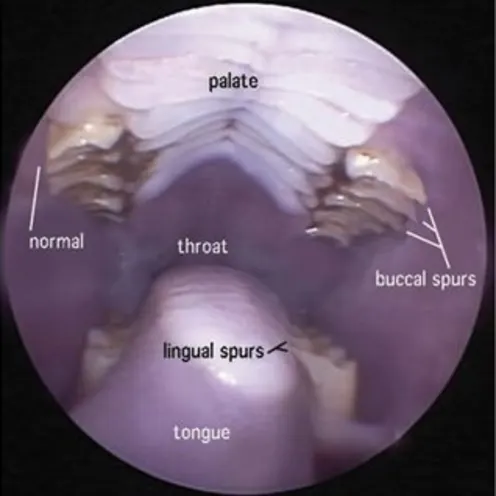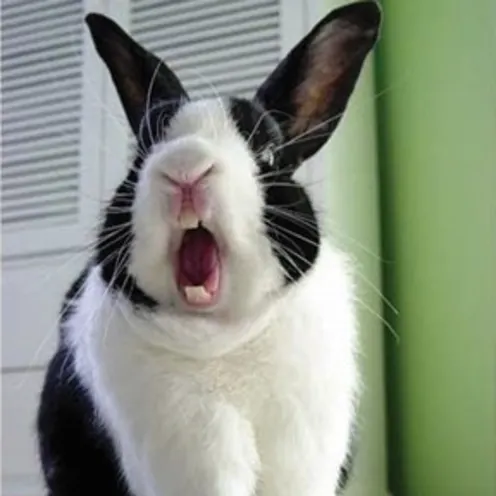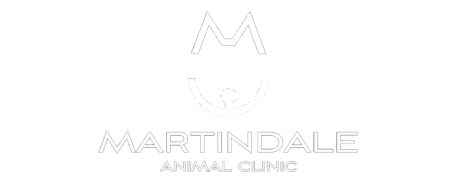Martindale Animal Clinic

Rabbit Care
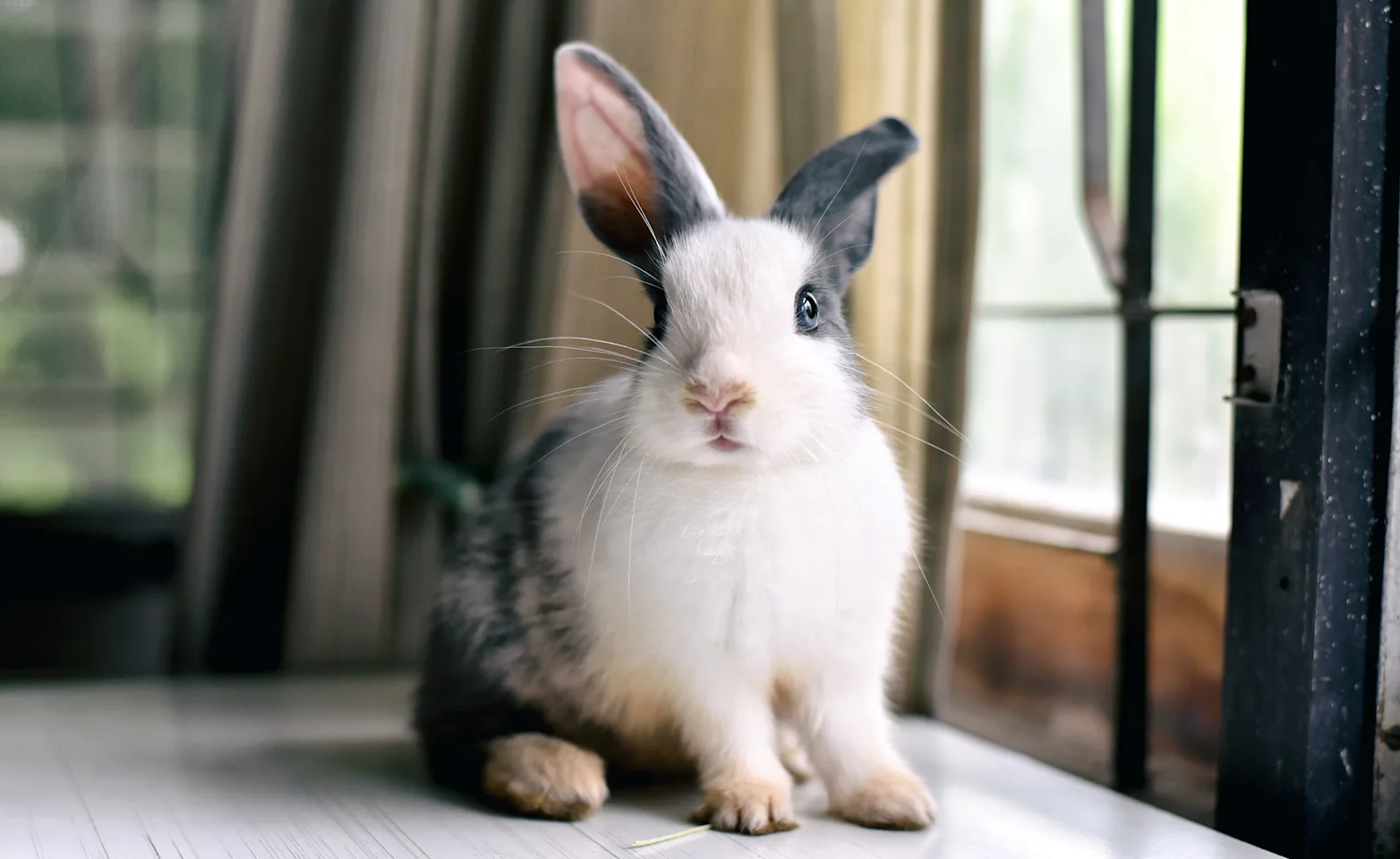
Rabbit Care Information
Proper care for your rabbit is essential in giving them a long and happy life. Keep things simple, plan to have fun and remember your rabbit could be with you for the next 10 years, so it is important to begin with some planning and information.
Thank you for bringing your rabbit to Martindale Animal Clinic for their checkup. We are committed to providing the best care possible. We have the benefit of multiple experienced veterinarians who consult regularly with each other. We also have the amazing support of Registered Veterinary Technicians and very experienced team members.
The most important thing to know about Martindale Animal Clinic is that it is our goal to partner with you to give your rabbit the best life possible.
Each veterinarian and team member at Martindale Animal Clinic is deeply committed to the health and well-being of your rabbit. We love animals as much as you do.
We are here to advise and help you every step of the way. If we can offer any assistance please don't hesitate to call.
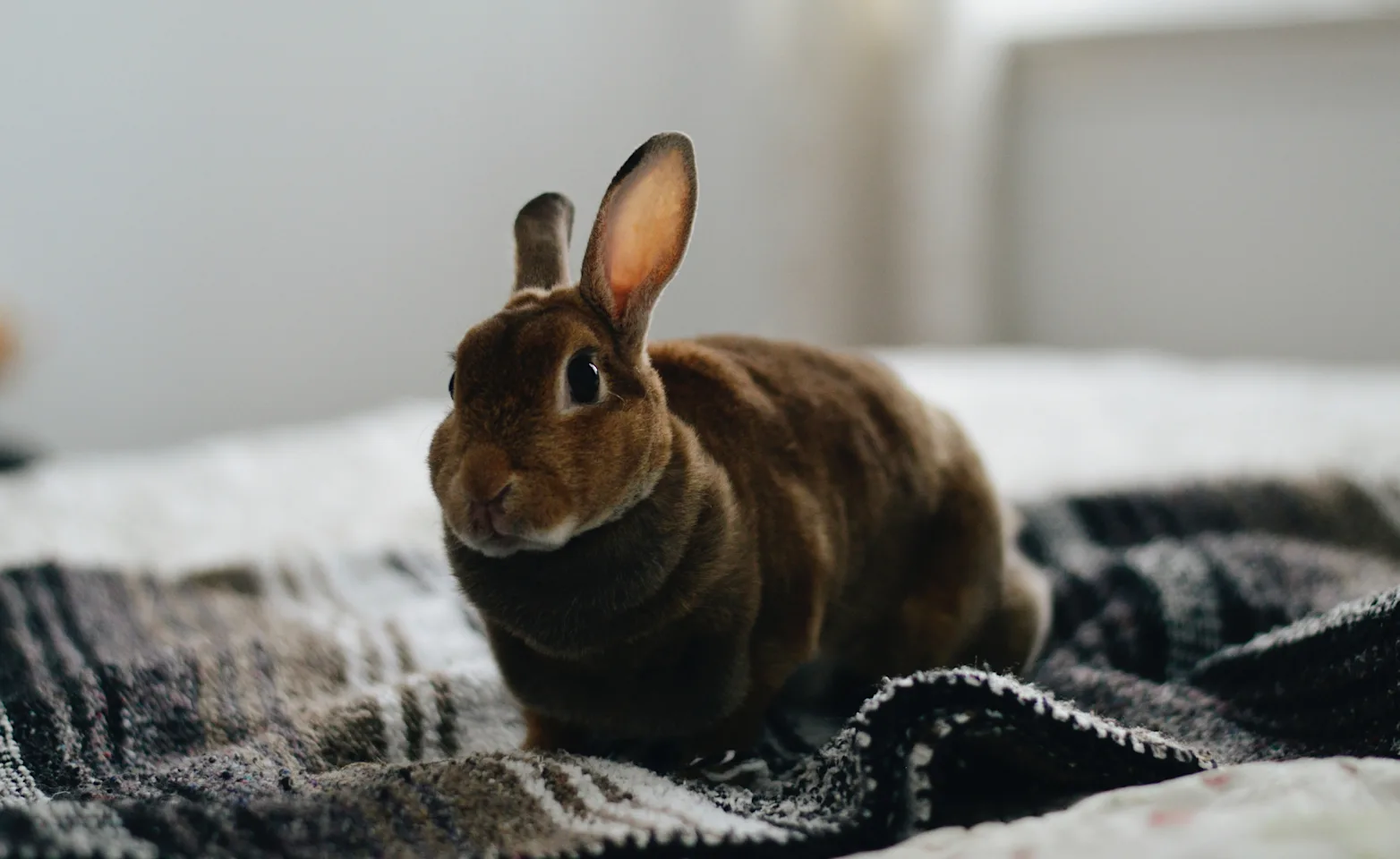
The Physical Exam
Is your rabbit healthy?
Every year your rabbit needs to come to the vet for a consultation and comprehensive physical exam.
We start without touching your rabbit, watching your rabbit's activity level, attitude and breathing. A normal rabbit is aware of what is going on around him or her. In upright-eared rabbits, the ears are perked up as they are paying attention to what is going on around them. Your rabbit should be able to walk around on the floor without dragging any legs or feet and be curious about what they find there. Your rabbit's breathing should be even and regular. A nervous rabbit will often sniff the air quickly, but should never seem to be fighting to take a breath.
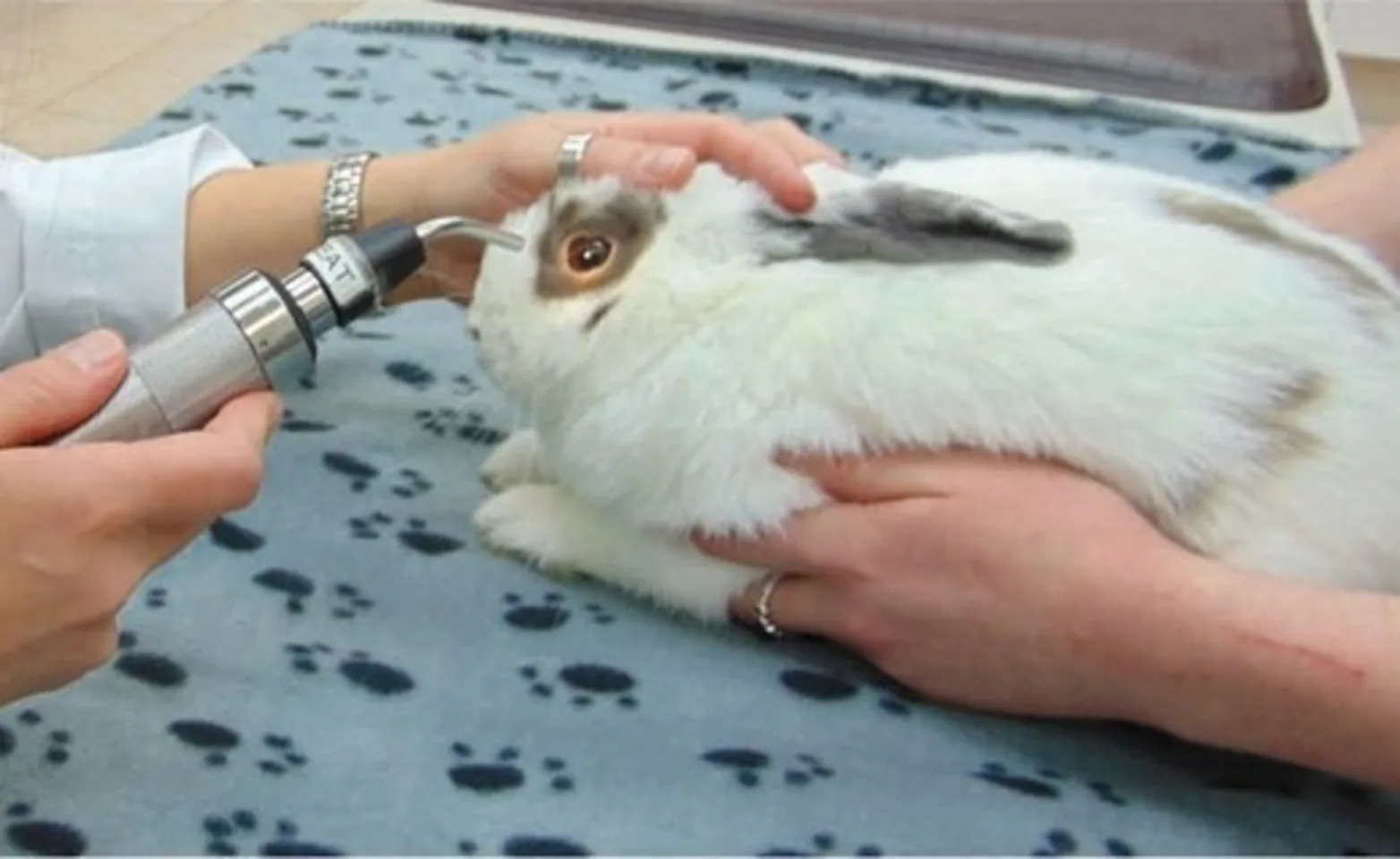
For our examinations we typically start at the front of your rabbit and work towards the rear. We look at your rabbit's eyes, nose and ears. All should be clean; there should not be any matted fur, which can indicate a discharge. There should also not be any abnormal smells coming from any of these places on your rabbit. Their eyes should not be cloudy or red, and they should be able to see well. We can evaluate vision by watching your rabbit move around the floor, possibly putting obstacles in their way.
Your rabbit's nose should be clean with no matted hair or crusting below the nostrils. They also should not be sneezing more than once or twice in a row. They should hold their ears evenly and should not be sensitive about having their ears touched. Never try to clean your rabbit's ears with q-tips as this can cause trauma to their ears. Any discharge or crusting in the ears is abnormal.
Next we look at your rabbit's teeth. We will first assess the front teeth, which are called incisors. These are the only teeth you will be able to see at home. These teeth should be even (both top teeth the same length and both bottom teeth the same length). There should not be much food stuck between the teeth. There should also not be any cracks in the teeth and the teeth should not be able to be moved. Evaluation of the back teeth (molars) requires specialized equipment called an otoscope. We look at the length and orientation of the molars, as well as evaluating for any sharp points that can injure the soft tissues of the mouth. We will also feel along the jawbone for any abnormal lumps and bumps, which could indicate infection. Many rabbits have dental problems, and we can provide you with advice and treatment solutions to help your rabbit.
Now we can move on to the rest of your rabbit. We check the chin and insides of the front legs for matted fur, which can indicate drooling and teeth problems. Also, we check the bottoms of their feet for redness or pain when they are touched. These can be signs of a condition called pododermatitis, which is a type of skin infection around the feet.
Using a stethoscope, we will listen to your rabbit’s heart and lungs, assessing for a normal heart rate and rhythm as well as clear lung sounds. We will feel your rabbit’s belly—the digestive tract, liver, kidneys and bladder can be felt in most rabbits.
Next, we look at your rabbit's stomach (underside) and behind. Again, there should not be any matted hair or material (usually feces) stuck to the hair around this area. This can be a sign of obesity, urinary issues, or possibly diarrhea.
Finally, we look at your rabbit from the top. They should be slightly pear shaped. If your rabbit looks more like an apple with a head, it is probably overweight.
Common Diseases in Rabbits
Obesity
Obesity is one of the most common problems seen in pet rabbits. This condition usually results when rabbits are being fed too many pellets. Rabbit pellets are high in calories and low in fiber. Obesity can also result when rabbits are kept in cages for most of their life and are not allowed much time outside of their cages to exercise.
Obesity can lead to many other health problems. Lack of physical activity can contribute to gastrointestinal and urinary tract disease as well as pododermatitis (foot problems) because there is more weight resting on the feet than there should be.
Aside from making your rabbit unhealthy in these ways, any underlying respiratory or heart problems can be made much worse by obesity. They become less fit to handle stress, and are more at risk of complications during anesthesia should it be necessary.
An obese rabbit also has difficulty grooming itself. You may have to clean your rabbit's rear end frequently to prevent conditions called urine scald (where urine that is in contact with skin for too long causes irritation and infection) or fly strike (where feces matted in the fur attracts flies, which lay their eggs that become maggots).
To prevent your rabbit from becoming obese, he or she will need time out of the cage to exercise. Wild rabbits have a home range of about 2 acres and cover this range at least once every day foraging for food. A big difference when compared to our rabbits where an average rabbit cage size is about 2ft by 2 ft.
It is not always easy to tell if your rabbit is obese. Besides assessing their body shape, if the dewlap is large enough that it touches your rabbit's elbows when it is sitting up, it is obese. If you see extra skin that touches the ground around the back end of your rabbit, it is obese. You should also be able to feel your rabbit's ribs without seeing them. Rex rabbits as a breed are particularly prone to becoming overweight.
Your veterinarian can help you in assessing your rabbit for obesity.
Pododermatitis
Pododermatitis is unfortunately a very common problem. This is an infection of the feet sometimes known as sore hocks. This is very commonly seen in overweight rabbits, but can also be seen in rabbits that are on wire bottom cages with nothing to sit on to get off the wire, or in rabbits in a cage with a completely solid bottom that is not cleaned often enough.
Urine is very irritating to skin and will burn. If your rabbit can't, or won't, get out of the urine (eg. if the most comfortable place to sit in the cage is the litter box) the urine can burn the bottom of their feet. This condition can range from very mild, where changing the cage bottom and bedding may be enough to let the areas heal, to extremely severe where the bones in the feet have been affected and may require surgical amputation.
Prevent pododermatitis by making sure that your rabbit doesn't get overweight, that the cage is cleaned often and has something besides wire on the bottom that can be cleaned or changed regularly. Remember, wood absorbs urine but does not dry quickly, so it isn't a good thing for your rabbit to sit on. Cardboard is a better option that can be easily changed daily when it becomes soiled. A mat made of t-shirt material, towels, or a pillowcase works well too, and you can change it every day and clean it in the washing machine.
Pasteurella
If you've had rabbits for a while you may have heard of Pasteurella or rabbit "Snuffles". This is a bacterium that can cause many problems in rabbits. Unfortunately, most rabbits are exposed to Pasteurella when they are babies, so there is no way to keep your rabbit from being exposed. Pasteurella usually rears its head in two ways:
Firstly, it can be seen as respiratory disease which may range from so mild that there is a little discharge from the nose and eyes and occasionally sneezing, to so severe that your rabbit develops pneumonia or middle ear infections which may be fatal.
Secondly, we can see Pasteurella in the form of abscesses (a collection of pus). These often form in the jaw and neck area, but can develop anywhere. They can be very difficult to get rid of and many rabbits with jaw abscesses will need extensive surgery to treat them.
To help keep your rabbit from developing a clinical Pasteurella infection, try to keep him or her as healthy in all other ways as possible. Often they develop signs of disease at times of stress, meaning times when they are too hot or too cold, times when they are transported, times when they don't feel well for other reasons, or when they are overweight.
If you notice a runny nose or a lump anywhere on your rabbit, it is best to take him to a veterinarian. Sometimes the small lump that you can see is even larger under the skin. The best chance for successful treatment involves removing the infected material and placing your rabbit on a long course of antibiotics.
Gastrointestinal and Urinary Tract Disease
Gastrointestinal disease (Gl disease) is a general term that includes any problems with the stomach, intestines, colon, or cecum. This can include anything from intermittent soft stools to diarrhea. Believe it or not, most Gl disease is again the result of obesity, lack of exercise and high pellet diets.
Your rabbit is designed to eat a large amount of high fiber, low calorie food every day. Their
Gl tract needs the fiber in grasses to push the food through at a normal rate. Pellets are too "easy" to digest, they don't have to chew them much, and they don't have the fiber to keep the Gl tract running normally.
A condition called Ileus can result when the Gl tract slows or stops moving. They may feel bloated, have a tummy ache and without things moving through at the right rate, there will be overgrowth of the bad bacteria. The production of feces may slow or stop. This condition can be life threatening if not treated immediately. One of the easiest ways to prevent this is to feed your rabbit lots of high quality grass hay, very few, if any pellets, and make sure they have time and room to exercise.
Urinary tract disease is also linked to a diet high in pellets, obesity and lack of exercise. The urinary tract includes everything from the kidneys to the urine that you see on the cage floor. A common problem is excessive calcium in the urine. If there is too much calcium in the urine there is often a milky colour due to crystal formation. Foods that are higher in calcium should be avoided as unlike most mammals, in rabbits the extra calcium the body does not need is eliminated in the urine which can cause sediment or "sand" to form in the kidneys and the bladder. This sediment can stay for a prolonged period of time and eventually lead to urinary stones. Alfalfa hay and certain greens such as spinach contribute to more sand formation and should be limited
Just like with the Gl tract, obesity and lack of exercise can cause the urinary system to slow down and become lazy too. The bladder won't contract as hard during urination so it is going to force less of that calcium sand out of the bladder and make it more likely that they will get a bladder stone .
In female rabbits, the sand can come out pretty easily if the bladder is contracting well. In male rabbits however, since the urethral opening is smaller, the sand can actually get stuck on the way out. This blocks the rabbit's ability to urinate and is an emergency as they can die in about 3 hours if they can't urinate.
You can limit the majority of these health conditions by following the practices presented below:
Feed diets that are as close as possible to what a wild rabbit would eat: free-choice high fiber Timothy hay, about 1 cup of mixed greens (non treated green grass, dandelion greens, or exotic greens ) for each two pounds of rabbit daily
Access to fresh water all the time, in both water bowls and bottles
Room and time to run around and get some exercise
Appropriate cage size and set-up with a separate litter area
Do not feed dried fruits, crackers, bread or seeds to your rabbit.
There are always things that, regardless of how well you take care of your rabbit, may show up at some time. However, these steps will help increase the chances that your rabbit will grow to be the healthiest that it can be and live a long and happy life!
Now we can move on to the rest of your rabbit. We check the chin and insides of the front legs for matted fur, which can indicate drooling and teeth problems. Also, we check the bottoms of their feet for redness or pain when they are touched. These can be signs of a condition called pododermatitis, which is a type of skin infection around the feet.
Using a stethoscope, we will listen to your rabbit’s heart and lungs, assessing for a normal heart rate and rhythm as well as clear lung sounds. We will feel your rabbit’s belly—the digestive tract, liver, kidneys and bladder can be felt in most rabbits.
Next, we look at your rabbit's stomach (underside) and behind. Again, there should not be any matted hair or material (usually feces) stuck to the hair around this area. This can be a sign of obesity, urinary issues, or possibly diarrhea.
Finally, we look at your rabbit from the top. They should be slightly pear shaped. If your rabbit looks more like an apple with a head, it is probably overweight.
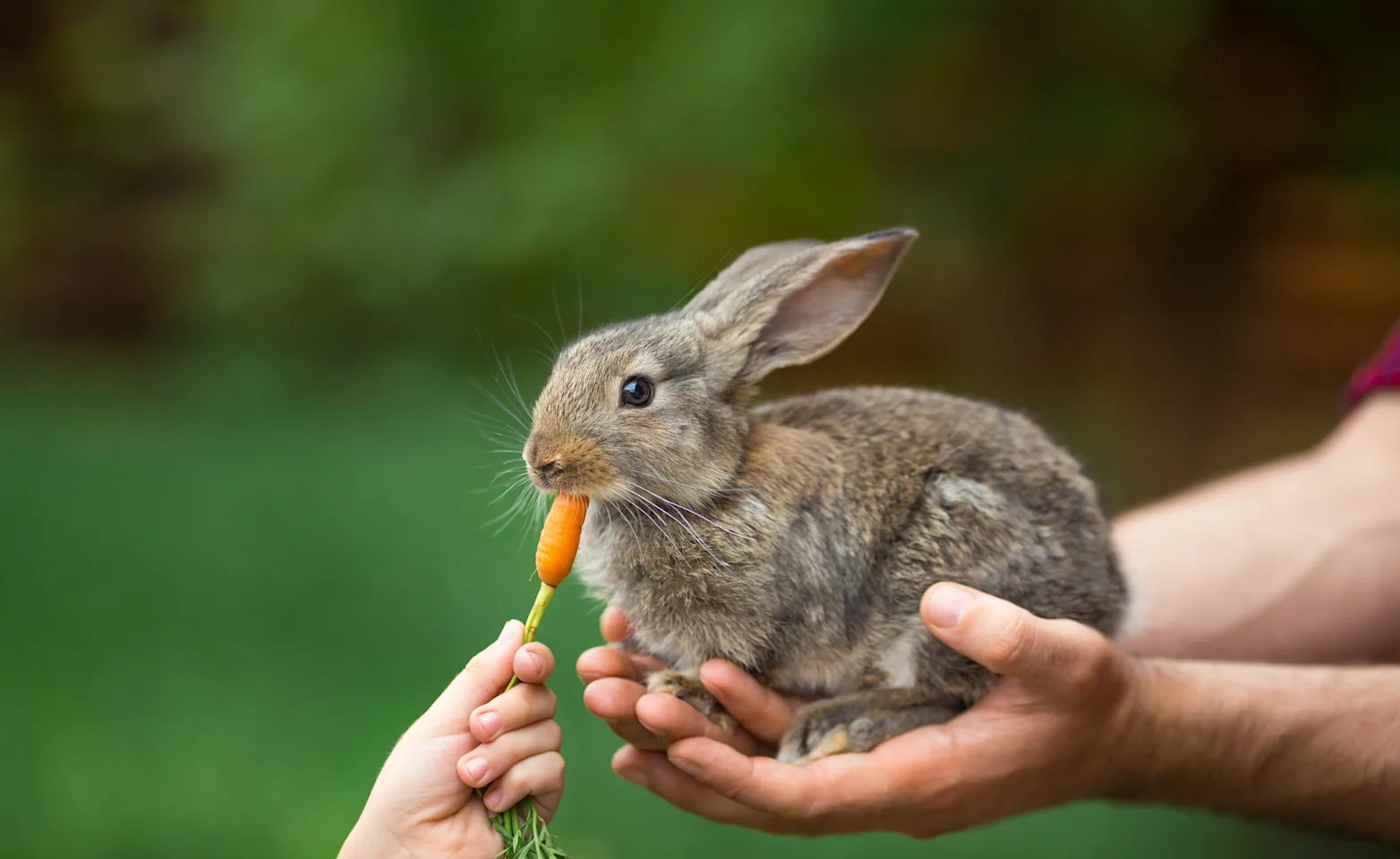
Feeding Guide For Your Rabbit
Rabbits are herbivores, which means they eat plants exclusively. Your rabbit has "open-rooted" teeth which continue to grow throughout their lifetime to compensate for natural wear. If your rabbit is not fed roughage (long stem hay, fresh greens) on a daily basis, their teeth will not wear appropriately, they will become over grown and cause serious health problems.
Your rabbit needs to have a good quality hay (long stem, not cubes!) available to them at all times. Freshen it up each morning. Timothy hay is the best but if it is not available, mixed grasses, oat, or meadow grasses can be offered.
Rabbits also need to be offered fresh mixed greens daily. Your rabbit needs 1 cup of tightly packed fresh greens per kilogram of body weight each day. There should be at least 3 different types of greens in each mix. A selection of appropriate greens are listed below:
Fresh Greens: Parsley, Kale, Collard Greens, Dandelion Greens, Chicory, Mustard plant, Romaine Lettuce, Basil, Endive, Carrot tops, Swiss Chard, Cilantro, Beet greens, Dill, Rapini, Watercress
Pellet foods are very concentrated, calorie dense foods that were originally formulated to feed rabbits in commercial rabbitries. The high calories are required for breeding or meat production. Pellets are low in fibre and since fibre is essential for a healthy gastrointestinal tract, adult rabbits do not need pellets as part of their diet. They can, however, be fed in small amounts (typically less than 1/4 cup per day) as part of a healthy diet along with hay and greens.
A papaya tablet can also be given once daily to help your rabbit breakdown hair that often accumulates in the stomach.
How Do I Get My Rabbit to Eat More Hay?
Offer your rabbit a variety of grass hays such as Timothy, brome, orchard grass, and oat hay. Grass hay should form the base of an adult rabbit's diet (70-80% of the total diet). The health benefits of grass hay are numerous, including helping to wear their continuously growing teeth, maintaining a healthy weight and supporting a healthy intestinal tract. ***Your rabbit should have unlimited access to hay* **
Helpful Strategies:
Begin with smaller bits of hay by cutting regular hay into smaller sized pieces and gradually increase the size over time
The pieces of hay can be mixed with the food they are eating already or a very small amount of a tasty treat or favourite green
Offer two different kinds of hay at least initially (orchard grass is a very aromatic hay and would be a good choice to start with)
If needed due to its increased palatability, begin with a small amount alfalfa hay (however due to its high calcium and calorie content continuous feeding of alfalfa hay is not recommended)
Hay can be soaked in very diluted apple juice for flavour (change daily)
Place hay in multiple locations including inside the litter pan
Tunnels, baskets and bungalows made from hay are available which they can run through, sit in and chew through (please ask us to order them in fresh for your rabbit)
Reducing quantity of pellets must be done very gradually and with close monitoring of appetite, body weight and stool size/volume. Changing diet slowly can prevent serious problems resulting from a lack of food intake. Any change in your rabbit's condition should be evaluated by your veterinarian.
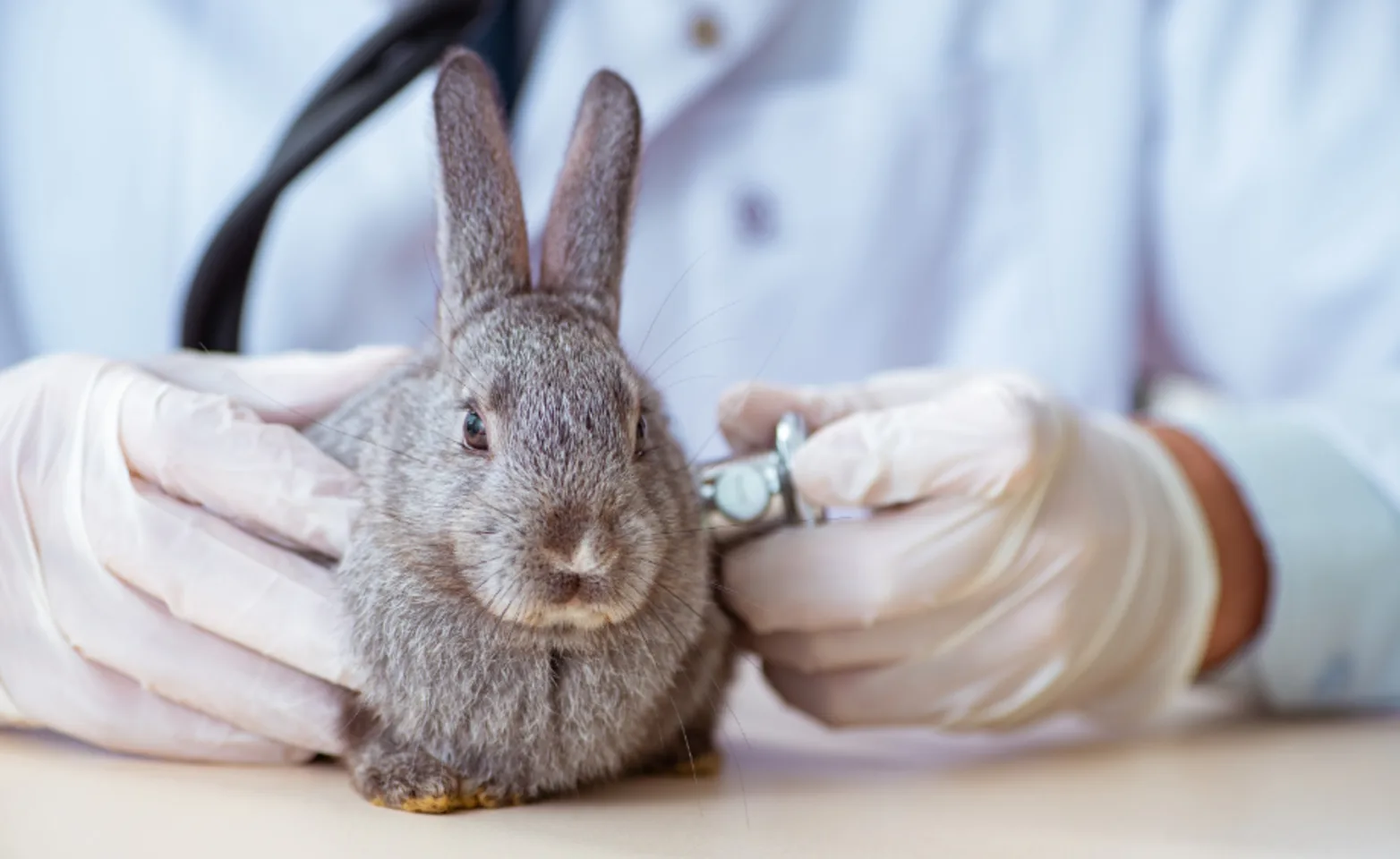
Rabbit Dental Disease and Abscesses
Rabbits are one of the unique species of animals whose teeth never stop growing throughout their lives. This is because they evolved in an environment which forced them to depend on eating tough grasses as the majority of their diet. Because of the abrasive nature of this diet, rapid wear occurs to the teeth. Consequently, they have adapted to this by evolving teeth that continuously grow. Manufactured pelleted rabbit diets cannot provide the tooth wear required to balance the growth, being less abrasive than the natural diet and of high energy density. Therefore, the best diet for rabbits is good quality timothy hay and a variety of greens (basil, lettuce, parsley, dandelion greens, etc.).
Signs of dental disease include:
Difficulty chewing or dropping food
Saliva moistened chin, fur or paws
Weight loss
Appetite loss
Decreased stool production
Increased thirst due to pain
Persistent eye or nasal discharge
Elongated front (incisor) teeth
Facial swellings called abscesses.
Since their teeth exist in a finely balanced state of wear and replacement, any disruption of this balance rapidly leads to serious dental disease. Due to their ability to hide illnesses, dental disease can be occurring for quite a while and be quite advanced before rabbits show any evidence of problems. This is why regular health exams are extremely important.
During a dental exam, there may be obvious elongation of the molar teeth, curving of the teeth, and sharp points which can start abrading the cheek or tongue.
Further investigation with X-rays to assess the crowns, roots, and surrounding jaw bone is often done. Treatment involves reduction of elongated teeth and points in an attempt to establish a normal surface so the teeth will wear on their own. This will also reduce pain and allow the rabbit to chew normally. Despite establishing a surface for teeth to wear normally, the teeth in some rabbits may continue to wear unevenly. This is due to the abnormal forces that have already been exerted on the teeth, or a congenital malalignment. These rabbits will likely need regular dental procedures.
Dental disease can result in bacterial infection in the roots of teeth, the surrounding bone as well as the soft tissues around the jaw. This is called a dental abscess. Dental abscesses can be challenging to treat once they form. Antibiotic medication alone rarely eliminates the infection due to the inability of the antibiotics to penetrate into the abscess. The recommended treatment involves surgically opening and draining the abscess, removing as much of the infected tissue as possible and removing diseased teeth. This procedure often needs to be repeated multiple times as the infection can persist in bone and soft tissue. This, combined with appropriate antibiotic selection based on a culture of the organisms involved, provides the best chance of treating the abscess. Any elongated teeth can also be reduced at the same time.
Without treatment, dental disease will continue to worsen, causing chronic pain and poor health.
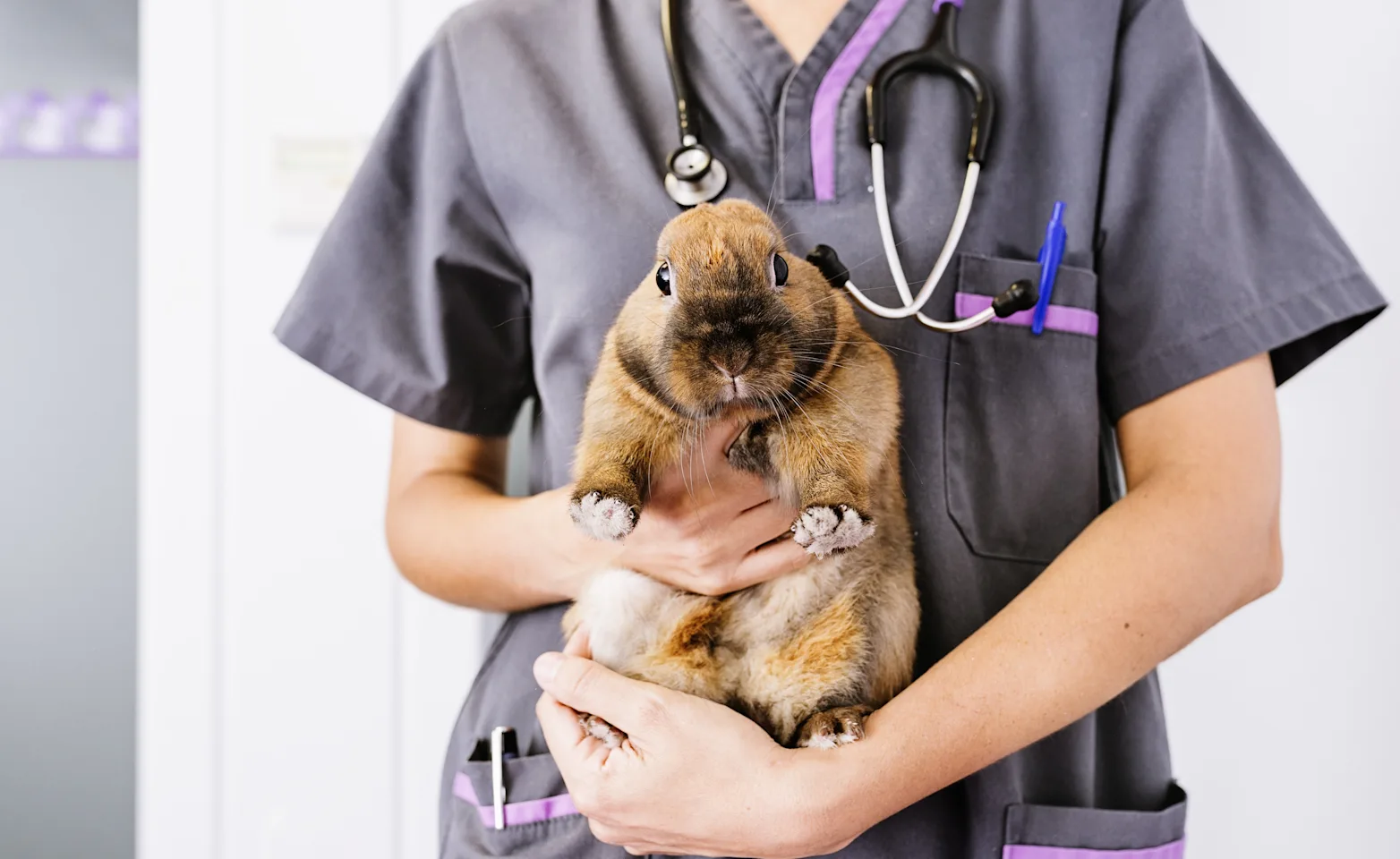
Spaying and Neutering
Altered (spayed or neutered) rabbits are healthier and live longer than unaltered rabbits. The risk of common reproductive cancers (ovarian, uterine, mammary or testicular) are virtually eliminated
Altering your rabbit can improve companionship. They are calmer, more loving, and dependable once the undeniable urge to mate has been removed. In addition, your rabbit will be less prone to destructive (chewing, digging) and aggressive (biting, lunging, growling) behaviour after surgery.
Unaltered rabbits may spray urine to mark. Rabbits are much easier to litter train, and more reliably trained, after they have been spayed or neutered.
Altered rabbits won't contribute to the problem of overpopulation of rabbits. Unwanted rabbits suffer the same fate as dogs and cats in overcrowded shelters. We need to help control overpopulation by having all companion animals spayed or neutered.
Altered rabbits can safely have a friend to play with. Rabbits are social animals and enjoy the company of other rabbits. Unaltered rabbits may fight with other rabbits, either of the same or opposite sex, due to sexual aggression.
Spaying and neutering rabbits is a very safe procedure when performed by an experienced rabbit veterinarian.
At what age should rabbits be spayed or neutered?
Rabbits mature faster than dogs and cats, which is why we recommend having them altered around 4 months of age.
What safety precautions are taken?
Rabbits should not be fasted prior to surgery. Due to your rabbit's sensitive digestive tract, they must always have access to food and water. Unlike cats and dogs, rabbits cannot vomit so an empty stomach prior to surgery is not necessary.
Your rabbit will have a pre-surgical exam done before the surgery. Chest x-rays are recommended also, this will help detect any medical condition that could increase anesthetic risk including underlying respiratory disease.
Intravenous fluids during the surgery will help to regulate your rabbit's blood pressure. Fluids will also help the kidneys process the anesthetic and pain medications, and help the digestive tract stay hydrated. This helps prevent slowing down of the digestive system post-operatively.
Feeding your rabbit as soon as they wake up is important to keep the digestive tract moving. This can be done with a syringe using powdered hay mixed with water.
Pain medication given before and after the surgery ensures they stay comfortable, are relaxed, and will quickly resume their normal activities.
After Hours Clinics for Rabbits:
Ontario Veterinary College (University of Guelph) Small Animal Clinic
Gordon St & College Ave W, 2 College Ave W, Guelph, ON N1G 2W1, Canada
It is very important to keep the name and phone number of your veterinarian handy:
Martindale Animal Clinic
www.martindaleanimalclinic.com
Helpful Websites:
House Rabbit Society: https://rabbit.org/
